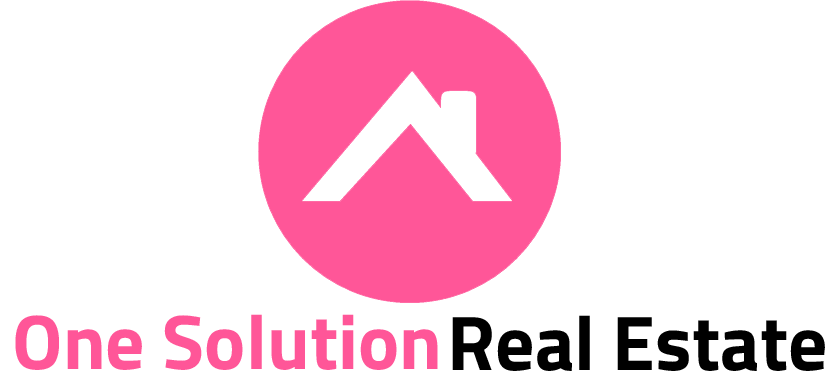Understanding Consumer Loans: A Comprehensive Guide for Beginners
Welcome to the world of consumer loans! Whether you’re dreaming of a new car, planning your dream wedding, or needing extra cash to cover unexpected expenses, understanding consumer loans is an essential skill that can empower you to make informed financial decisions. In this guide for beginners, we’ll look at the complexities of consumer loans and equip you with the knowledge you need to navigate this economic landscape.
First and foremost, let’s define what a consumer loan is. It is a loan taken out by an individual for personal use rather than business purposes. This could include loans for buying a house or car, financing education expenses, or consolidating credit card debt.
Consumer loans can come in various forms, such as installment loans, lines of credit, and credit cards. Each type has its unique terms and conditions, interest rates, and repayment options. It’s essential to understand the differences between these types of loans to choose the one that best suits your needs.
One of the critical factors to consider when taking out a consumer loan is the interest rate. This is the price you pay for borrowing money from a lender. Interest rates can vary greatly depending on factors such as your credit score, income level, and the amount you’re borrowing.
Another important aspect of consumer loans is the repayment schedule. This outlines how much you’ll need to pay each month and for how long until the loan is fully paid off. Understanding this schedule will help you plan.
What are Consumer Loans?
Consumer loans are a financial product that allows individuals to borrow money for personal use. These loans can be used for a variety of purposes, such as buying a car, paying for home renovations, or consolidating debt. They are different from other types of loans, such as business loans or mortgages, specifically designed for those purposes.
Many different types of consumer loans are available in the market, each with unique features and requirements. Some common examples include personal loans, auto loans, student loans, and credit card debt.
Types of Consumer Loans:
1. Secured Loans:
Secured loans are those that require collateral, such as a car or home, to secure the loan. This collateral acts as a form of security for the lender in case the borrower defaults on the loan. The interest rates for secured loans are usually lower than unsecured loans because of the reduced risk for the lender.
2. Unsecured Loans:
Unlike secured loans, unsecured loans do not require any collateral. These loans are based solely on the borrower’s creditworthiness and ability to repay the loan. As there is no collateral involved, lenders often charge higher interest rates to compensate for the higher risk they take.
3. Personal Loans:
Personal loans are a type of unsecured loan that can be used for various personal expenses such as debt consolidation, home renovations, medical bills, or even vacations. They have fixed interest rates and monthly payments over a specific period.
4. Credit Cards:
Credit cards are one of the most common consumer loan forms individuals use today. They allow you to borrow money from a financial institution up to a specific limit and then pay it back at regular intervals with added interest charges if you do not pay your balance in full each month.
5. Lines of Credit:
A line of credit is similar to a credit card but with higher borrowing limits and typically lower interest rates. It gives borrowers access to funds that they can use whenever needed and only pay interest on what is borrowed rather than
– Personal loans
Personal loans are a type of consumer loan that can provide individuals with the funds they need to cover personal expenses, such as home renovations, medical bills, or debt consolidation. They differ from other types of loans in that they are not secured by collateral, meaning borrowers do not have to put up any assets (such as a car or house) as security for the loan. This makes personal loans an attractive option for those who may have little investments to use as collateral.
One common misconception about personal loans is that they are only available through traditional banks and credit unions. While these institutions do offer personal loans, many online lenders specialize in this type of lending. These online lenders often have faster application processes and may be more flexible with their eligibility requirements.
When considering taking out a personal loan, it is crucial to understand how interest rates work. The interest rate on a loan determines how much you will pay back over time in addition to your initial borrowed amount. Lower interest rates mean less money spent overall, while higher ones can result in significantly more.
– Credit cards
Credit cards are a popular form of consumer loan that allows individuals to make purchases on credit and repay the amount later. They are issued by banks, credit unions, and other financial institutions and offer a convenient way for consumers to access funds without having to carry cash.
Types of Credit Cards:
Various types of credit cards are available in the market, each with its own features and benefits. Some common types include:
1. Rewards Credit Cards: These cards allow users to earn points or cashback on their purchases, which can be redeemed for rewards such as travel discounts, gift cards, or statement credits.
2. Travel Credit Cards: These are designed for frequent travelers and offer benefits such as airline miles, hotel discounts, and airport lounge access.
3. Cashback Credit Cards: As the name suggests, these cards give users a percentage of their spending in cashback.
4. Balance Transfer Credit Cards: These allow individuals to transfer balances from one card to another at a lower interest rate or with an introductory 0% APR period.
5. Secured Credit Cards: These require users to provide collateral in the form of a cash deposit before being approved for the card. They can help build credit or improve a low credit score.

How to Get a Consumer Loan:
Consumer loans are a popular form of borrowing money for personal use. They can finance large purchases, cover unexpected expenses, or consolidate existing debt. If you are considering getting a consumer loan, it is important to understand the process and make an informed decision.
1. Determine your borrowing needs:
The first step in getting a consumer loan is determining how much money you need to borrow and what you will use it for. This will help you choose the right type of loan and ensure that you only borrow what you can afford.
2. Know your credit score:
Your credit score plays a crucial role in determining whether or not you will be approved for a consumer loan and at what interest rate. Before applying for a loan, you must check your credit score and ensure there are no errors that could negatively impact your application.
3. Decide on the type of loan:
There are several types of consumer loans available, such as personal loans, auto loans, and home equity loans. Each type has its terms and conditions, so it’s essential to consider which one best suits your needs carefully.
Pros and Cons of Consumer Loans:
Consumer loans can offer a lifeline for those needing financial assistance, but like any financial decision, weighing the pros and cons before taking on this type of loan is crucial. Here are some key factors to consider when evaluating consumer loans:
Pros:
1. Quick access to funds: One of the most significant advantages of consumer loans is that they provide quick access when needed. Unlike other types of loans with a lengthy application process, consumer loans can often be approved and funded within a few days.
2. Flexibility: Many consumer loans offer flexible repayment terms, allowing borrowers to choose from different payment plans based on their financial situation. This can make it easier for borrowers to manage their debt and fit loan payments into their budget.
3. Low interest rates: Unlike other types of credit, such as credit cards or payday loans, consumer loans typically have lower interest rates. This means borrowers will pay less in interest over time and potentially save money in the long run.
4. Improves credit score: Taking out a consumer loan and making timely repayments can positively impact your credit score. You can improve your overall credit profile by diversifying your credit mix with different types of accounts, such as installment loans and consumer loans.
5. No collateral required: Most consumer loans are unsecured, meaning they do not require any collateral, such as property or assets, as security for the loan.
– Drawbacks and Cons to Consider
Consumer loans can be an effective tool for individuals to finance their needs and wants. However, like any financial product, there are certain drawbacks that consumers should consider before taking out a loan.
1. Higher-Interest Rates: One of the most significant drawbacks of consumer loans is lenders’ higher interest rates. These rates can vary depending on the type of loan and the borrower’s credit score, but they are generally higher than other forms of financing, such as mortgages or car loans. This means that borrowers will end up paying more in interest over the life of the loan, making it a more costly option.
2. Hidden Fees: Along with high-interest rates, some lenders may also charge hidden fees such as origination fees or prepayment penalties. These fees can significantly increase the overall cost of the loan and catch borrowers off guard if they are not aware of them beforehand. It is crucial for borrowers to carefully review all terms and conditions before signing a loan agreement to avoid any surprises.
3. Impact on Credit Score: Taking out a consumer loan can impact a borrower’s credit score. If payments are received and on time, it can positively affect their credit score and make it easier to obtain future loans at favorable terms. It is essential for borrowers to make timely payments to maintain a good credit score.
4. Potential Debt Trap: Consumer loans may provide quick access to funds, but they also come with the drawback of higher debt if not paid according to the loan terms.
Tips for Managing and Repaying Consumer Loans:
Managing and repaying consumer loans can seem overwhelming, especially if you have never taken out a loan. However, with proper planning and budgeting, it is possible to handle your loans responsibly. Here are some tips for managing and repaying consumer loans effectively.
1. Understand the terms and conditions of your loan: Before signing any loan agreement, ensure you fully understand the terms and conditions of the loan. This includes the interest rate, repayment schedule, fees or penalties, and missing payments’ consequences. Knowing these details will help you plan your finances accordingly.
2. Create a budget: It is vital to create a budget that includes your monthly loan payments. This will help you keep track of your expenses and ensure you have enough money to make timely repayments. Make sure to prioritize your loan payments in your budget to stay caught up on charges.
3. Set up automatic payments: Many lenders offer the option of setting up automatic payments from your bank account. This can be helpful as it ensures that your payments are made on time without the risk of forgetting or being late.
4. Make extra payments: If extra cash is available, consider making additional loan payments whenever possible. This will reduce the overall interest paid and help pay off the loan faster.
5. Avoid taking on too much debt: When considering taking out a new consumer loan, evaluate whether it is necessary and if you can afford it, along with any existing debts. Too much debt can lead to financial strain and difficulty making timely repayments.
6. Communicate with your lender: If you are facing financial difficulties and cannot make your loan payments, it is essential to communicate with your lender as soon as possible. They can offer alternative repayment options or temporarily suspend your payments until you get back on track.
7. Monitor your credit score: Timely loan repayments can positively impact your credit score, while missed or late payments can negatively affect you. Monitoring your credit score regularly and taking steps to improve it if needed is crucial.
8. Consider refinancing: If you have multiple loans with high interest rates, consider consolidating them into one loan with a lower interest rate through refinancing. This can help reduce the total amount you pay in interest and make managing repayments easier.
Remember, managing and repaying consumer loans requires discipline and responsible financial planning. Stay organized, communicate with your lender, and make timely payments to manage your loans successfully.
Conclusion

Consumer loans can be a valuable tool for managing your finances and achieving your goals, but it’s essential to understand them fully before taking one out. With this comprehensive guide, you now have the knowledge and tools to make informed decisions regarding consumer loans. Remember to consider your financial situation carefully and your needs before borrowing money. With responsible use, consumer loans can help you reach your financial goals faster and more efficiently.

